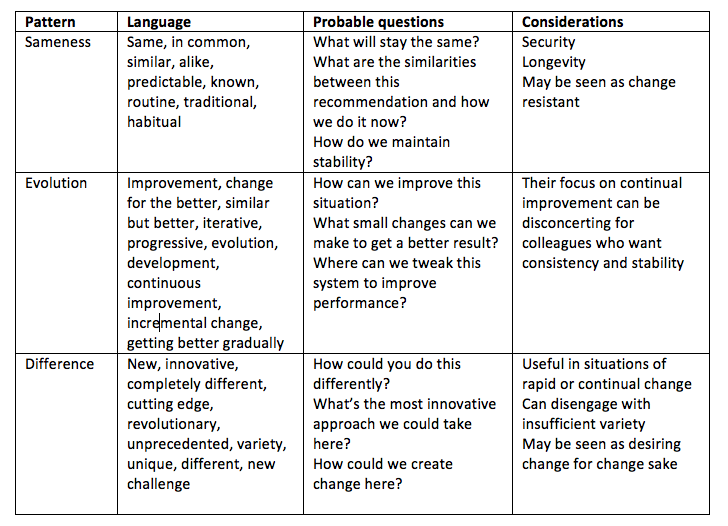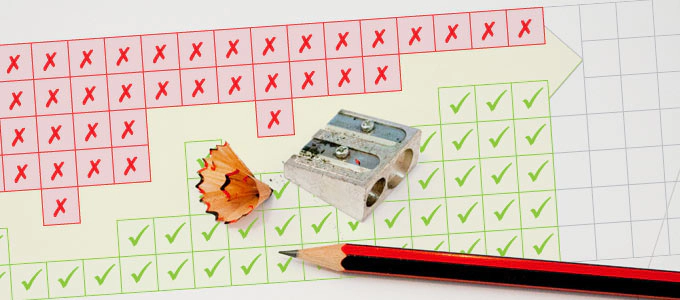leadership
Leading Change That Sticks: The Board’s Role
Published: October 7, 2013
Read Time: 5 minutes

Are you part of the problem?
It’s January and with New Year’s Resolutions fresh, it’s a time to contemplate change. Few would dispute that we are facing a time of what seems like increasing change and complexity. Failure to convert intention to action is a major risk in planning and responding to the changing landscape.
What if as a director, and as a board, your own unconscious motivators around change were part of the reason for change being unsustainable in your organisation?
Effective change management involves directors
The Australian Institute of Company Directors suggests that “effective change management requires directors to be active in modelling and communicating the need for and nature of any change”1. Yet what happens when the individual directors, and the board collectively, does not know exactly what they are modelling and communicating in relation to change?
Knowing and leading from your own ‘change profile’ is the key to modelling and communicating sustainable change — leading change that sticks.
What is your change profile?
Your change profile comes from the three relationship sorting metaprograms2, the unconscious sorting filters in our mind that determine what we pay attention to in our environment — what we filter into and out of our experience. This sorting function happens outside our conscious awareness and drives how we think, feel and act.
The three change profiles are:
-
Sameness: A person with a strong preference for Sameness will prioritise stability, security, routine and predictability, preferring to work with what is known. They tend to focus on what is the same in their environment and will match current experience with previous experience. This pattern also reflects the length of time an individual will productively engage in a work role before they need and/or seek a change. People high in Sameness typically remain in a role for 10+ years.
-
Evolution: A person seeking incremental change in their work environment. They are motivated by growth and continual improvement in manageable increments over time, without disrupting the status quo. People high in Evolution typically remain in a role for 5-7 years.
-
Difference: A person who has a strong preference for Difference is motivated by frequent and/or significant change in their work environment. This person will become demotivated in a stable or slow-paced environment. People high in Difference typically remain in a role for 1-3 years.
Here’s how you might recognise the change patterns around the board table:

Your change profile is the result of your relative motivation for the three change patterns. For example, your change profile might be high Difference, happy to work with Evolution, and demotivated by Sameness.
What is your personal change profile? What do you now know about the change profile of your director colleagues?
What is your Board’s change profile? How does that relate to the change culture across your organisation? And your sector?
Meet a few of my clients
Simone3, a leader in the aged care sector, is highly motivated by Difference. She wants to lead new and innovative initiates in a sector that overall is motivated by Evolution and Sameness. She becomes frustrated when her peers don’t connect with her ideas.
Jason, an auditor, has a strong preference for Sameness. He wants to maintain the status quo and finds it hard to stay tuned into conversations about change.
Fuelled by a strong belief that the current systems are broken, Amy is leading a lean systems development program in a health care network. Her strong Evolution focus results in a resistance to what she sees as ‘big risky changes’.
Jim chairs the board of a sporting organisation. As long as there is forward movement, Jim is happy. With an equal preference for Evolution and Difference, for Jim, staying where we are now is not an option.
Imagine…
Imagine they were all on your board (and they probably are)… how would you present your proposal? What would you need to cover to ensure that each remains motivated and engaged in the board conversation, able to reach a decision, and committed to the outcome?
Speak my language
Each change pattern has its own language (see table above). To communicate to my change pattern, you need to use my language. If you don’t, at best I might tune out. At worst, I could become demotivated or even actively resist.
After all, why would you speak French to me and expect me to respond and engage, when you know I only speak English?
In communicating a change to a broad audience, make sure you cover what will remain the same, where incremental changes will be made, and what will be different. Communicate in a way that everyone can hear and embrace.
Helping your board to model and communicate change
If the board’s role in effective change management is modelling and communicating change, how well is your board doing?
To increase your collective effectiveness and lead change that sticks:
-
Understand your own personal change profile and notice how that influences your communication around the board table and beyond. Build your own flexibility around change.
-
Get curious about the change profile of your director colleagues. Notice their language, what they value, what they question. Speak their language.
-
Determine the change profile of your organisation overall — its change culture.
-
Understand the Board’s change profile and communicate consciously to your key stakeholders, including your staff team.
Leading with conscious awareness of your own ‘change profile’ is a critical factor in modelling and communicating sustainable change — leading change that sticks.
-
Australian Institute of Company Directors Company Director’s Course Manual 2013/14 ↩︎
-
Metaprograms are an underpinning concept of NeuroLinguistic programming. NLP is the study of human excellence: Neuro is thinking, linguistic is language, and programming is the doing. Motivational Profiling, through the inventory of Work Attitudes and Motivations (iWAM) measures 48 motivational patterns or metaprograms, including the change patterns. ↩︎
-
Client names have been changed so as to preserve client anonymity without distorting the essential reality of the story. ↩︎
Share this Article
Recommended Reading
Recommended Viewing
Author
-
Consultant
-
- About
-
Corrinne enables her clients to achieve objectives faster through embracing the fearless leadership that results from the intersection of purpose, communication and motivation. She is passionate about enabling effective leadership through decoding the below conscious influence of motivational patterns. Corrinne is a co-author of ‘Peak Performance Patterns – Cracking the code for workplace performance’ and the forthcoming book ‘Shift: Making the change that matters’.
Found this article useful or informative?
Join 5,000+ not-for-profit & for-purpose directors receiving the latest insights on governance and leadership.
Receive a free e-book on improving your board decisions when you subscribe.
Unsubscribe anytime. We care about your privacy - read our Privacy Policy .







